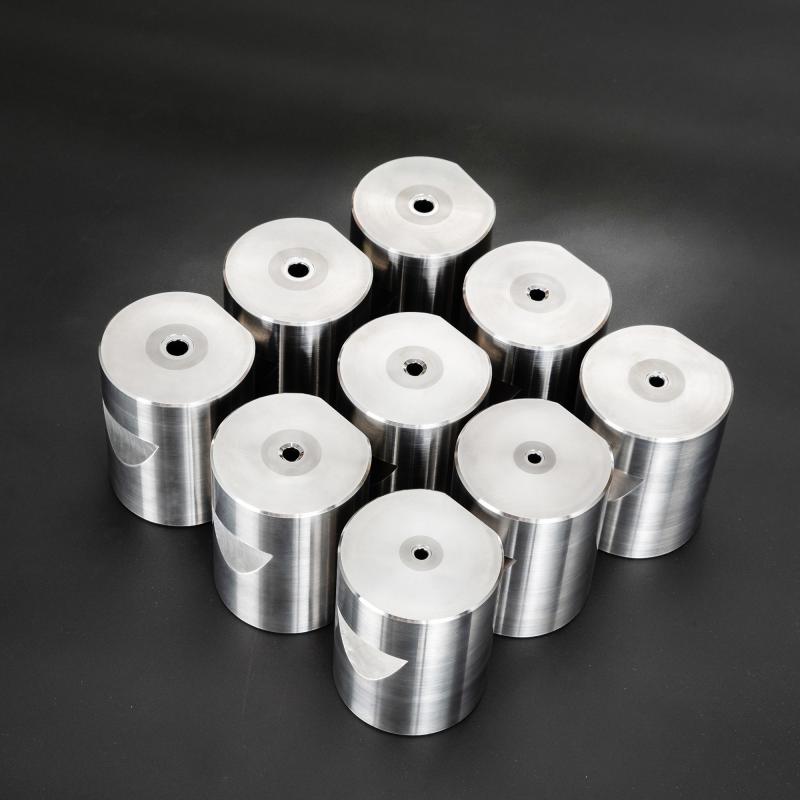When it comes to manufacturing, selecting the right Main Die is crucial for ensuring the quality, efficiency, and cost-effectiveness of the production process. Main Dies are essential tools used in various industries, from automotive to electronics, for shaping or forming materials into the desired product. The wrong choice of Main Die can lead to poor product quality, excessive waste, and increased costs. So, how can manufacturers make the right decision when choosing a main die? Here, we will explore the key factors that should be considered to help you make an informed choice.

1. Understand Your Product Type
The first step in selecting the right main die is to thoroughly understand the type of product you are producing. Different products, whether they are metal components, plastic parts, or rubber items, require specific types of dies.
Complexity of the Product: If the product has complex shapes or multiple features, a more intricate Die Design may be necessary. For example, products with undercuts or multiple cavities may require a specialized die to achieve the desired result.
Surface Finish: The quality of the product's surface finish is essential for many industries, such as automotive and consumer electronics. Dies designed for high-quality surface finishes may require more precision in their manufacturing process, which may influence your selection.
Size and Scale: Larger or bulkier products may require larger, heavier-duty dies, while smaller products may benefit from precision, lightweight dies. Additionally, the volume of the product you intend to produce can also influence your choice of die. High-volume production may require more durable and efficient dies that can withstand the stresses of mass manufacturing.
2. Consider Production Volume
The production volume is another critical factor to consider when selecting a main die. The quantity of products you need to produce will directly impact the type of die you choose.
Low-Volume Production: For smaller batches or prototype runs, simpler and less expensive dies might be sufficient. For example, single-use or short-run dies may be ideal for limited production, where the costs of a highly durable die may not be justified.
High-Volume Production: In cases where large quantities are required, high-precision, durable, and cost-efficient dies are essential. Dies that offer high longevity and can endure the wear and tear of mass production will save money in the long run. For high-volume production, manufacturers often opt for dies that can withstand hundreds or thousands of cycles without needing frequent maintenance or replacement.
3. Assess Material Requirements
The material being used in the production process has a significant impact on the type of die needed. Whether you are working with metals, plastics, or composite materials, the material’s properties will dictate which die material and design will work best.
Metal Products: If the product is made of metal, especially hard metals like steel or aluminum, a robust and wear-resistant die is necessary. Dies made from high-grade tool steels, such as H13 or D2, are commonly used in metal stamping and forming processes.
Plastic and Rubber Components: For plastic and rubber parts, dies may need to incorporate specific features like cavity inserts or cooling channels to accommodate material flow and temperature management. Injection molding, blow molding, and compression molding processes all require specialized dies that can handle the specific needs of plastic or rubber materials.
Heat and Wear Resistance: Some materials require dies that are particularly resistant to heat or wear. For example, die-casting processes using molten metals may need dies that can handle high temperatures without deforming, while forming processes with abrasive materials may require extra hardening and wear-resistant features.
4. Evaluate Die Material and Durability
The material of the die itself plays a pivotal role in determining its longevity and performance. High-quality, durable die materials reduce the risk of tool wear, ensuring long-term reliability and maintaining production consistency.
Die Materials: Depending on the material being processed, dies are often made from high-carbon steel, carbide, or alloyed steels that can withstand high pressure and temperature. For heavy-duty applications, dies with advanced coatings or heat-treated materials may be necessary for durability.
Longevity and Maintenance: If the die is to be used for high-volume production, the longevity and ease of maintenance become even more important. Durable dies that require minimal maintenance will reduce downtime and associated costs. Dies that can be serviced or repaired rather than replaced may be an ideal solution for long-term operations.
5. Consider Tooling and Design Flexibility
Tooling flexibility refers to the ability to modify the die for different parts or designs. For some production processes, the die may need to be adjusted over time to accommodate design changes or different product specifications.
Modular Dies: Modular dies offer flexibility by allowing the user to adjust or replace certain parts of the die without changing the entire setup. This can be beneficial in cases where product designs are likely to change, or different parts need to be produced using the same basic die.
Customization: Some applications may require custom dies designed for a specific purpose. In these cases, working closely with a die manufacturer to develop a custom die can help ensure that all your requirements—both in terms of functionality and performance—are met.
6. Examine Die Cost and ROI
Cost is often a major consideration when selecting the right main die. While it’s essential to choose a die that meets all the necessary criteria for performance, it’s also important to assess the total cost of the die, including production, maintenance, and replacement costs.
Initial Cost vs. Long-Term Value: High-quality dies tend to have a higher initial cost but provide greater value in the long term through reduced maintenance, longer lifespan, and fewer production disruptions. Conversely, cheaper dies may be suitable for low-volume or short-term runs but could end up costing more due to frequent maintenance or replacement.
Return on Investment (ROI): Evaluate the potential return on investment. High-quality dies that improve production efficiency and product quality will contribute to long-term profitability. Ensure that the selected die aligns with your production goals and can provide the desired ROI.
Selecting the right main die for your production needs requires careful consideration of factors such as product type, material requirements, production volume, die material and durability, tooling flexibility, and cost. By thoroughly evaluating these aspects, you can make an informed decision that ensures your manufacturing process runs smoothly, efficiently, and profitably. Whether you are producing complex parts for the automotive industry or precision components for electronics, choosing the right die is critical for achieving high-quality products and maximizing production efficiency.











